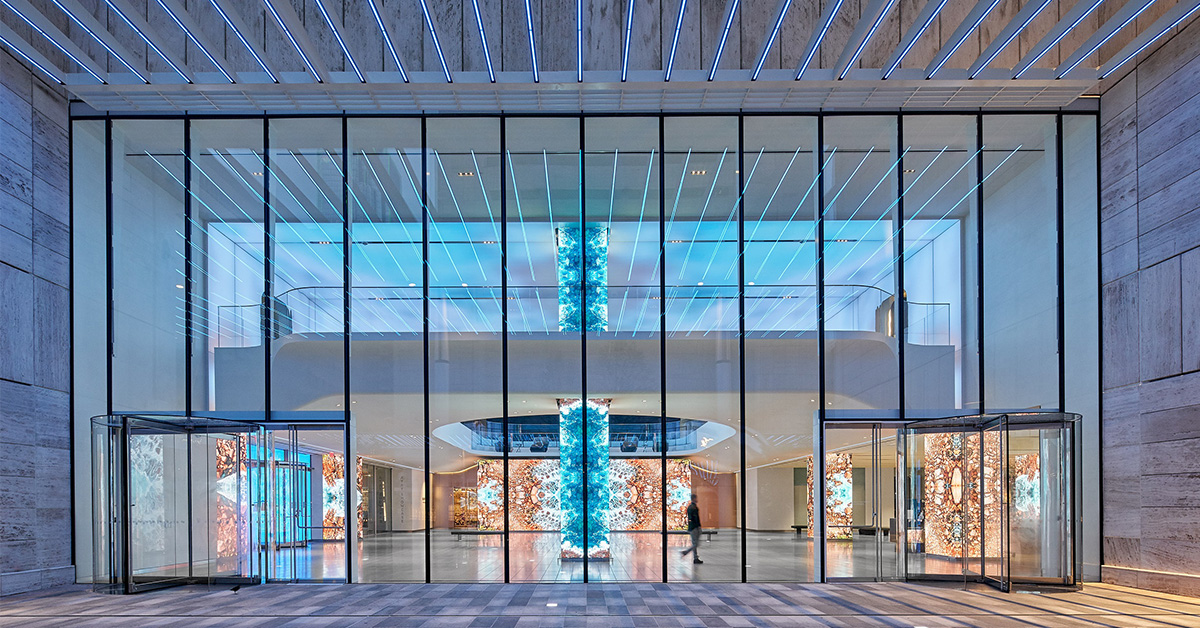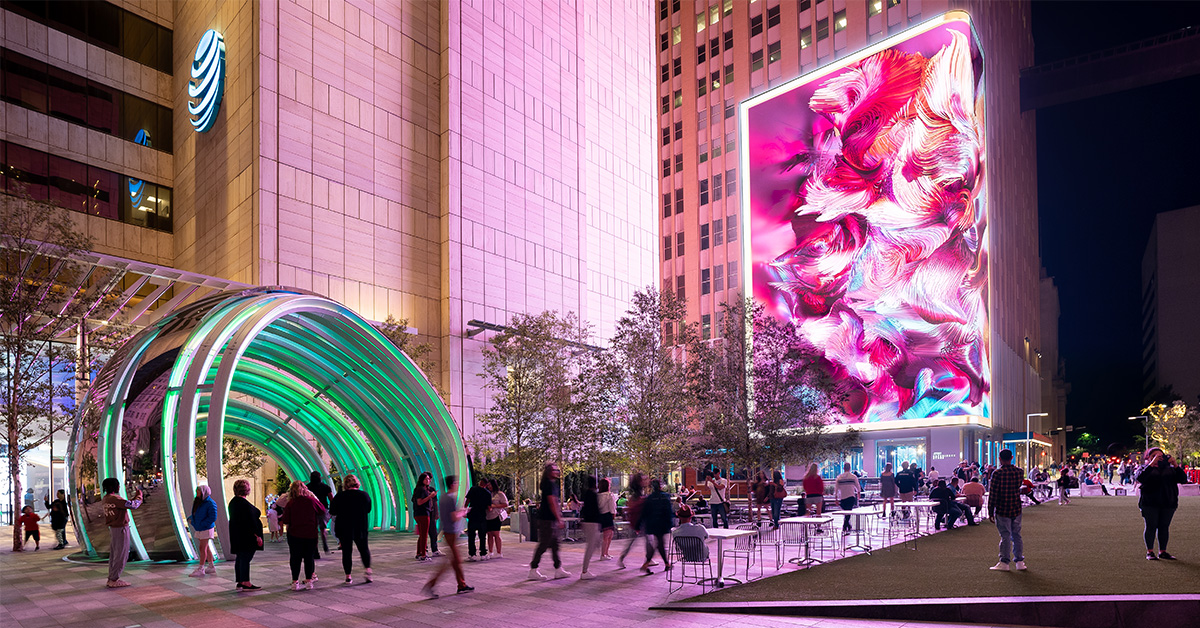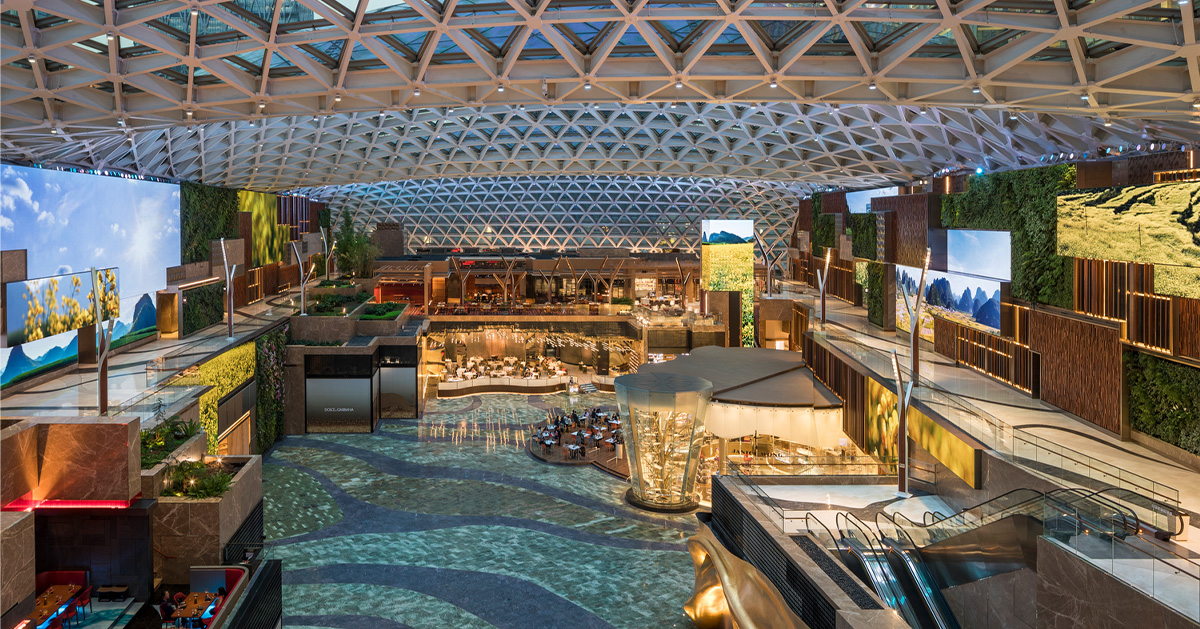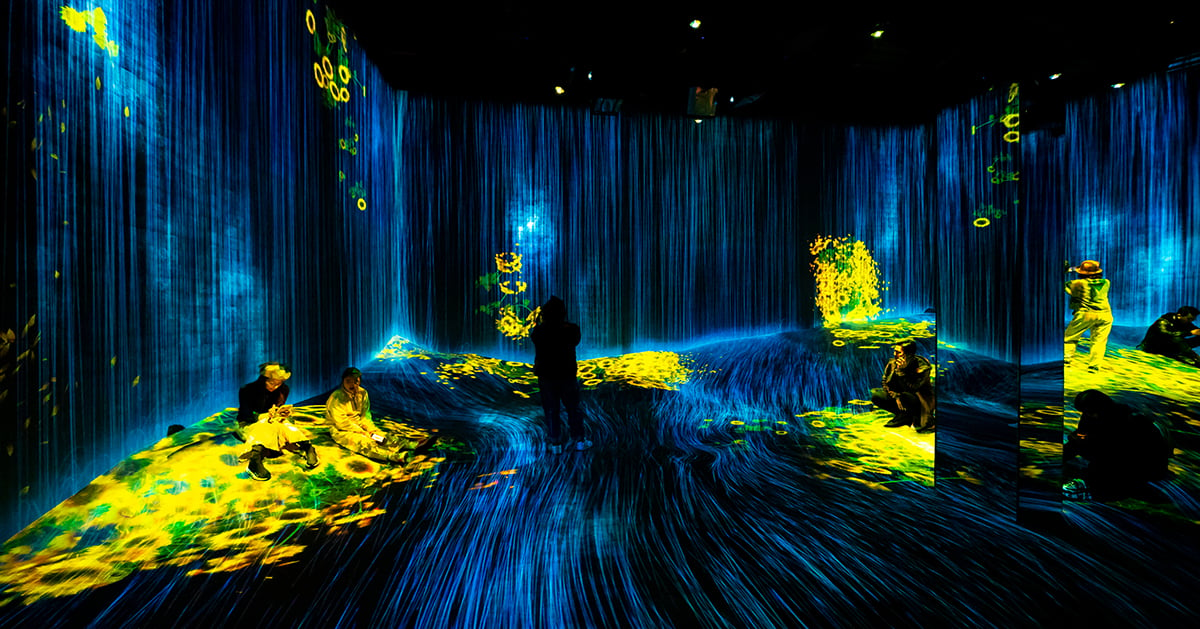
The evolution of the video wall
Video walls as art - How far can LED technology take the video wall?
Video walls have reached an exciting tipping point. The latest developments in LED video walls are helping designers create custom interactive experiences with unique shapes that can be integrated into the architecture of the space. They have even been described as ‘art pieces’.
It’s not just shape; higher color quality and innovations like transparent substrates and chip-on-board technology are opening opportunities for ground-breaking new applications.
So, what are the changes in technology and how are they transforming the appearance and impact of video walls? Let's dive in!
Technology Innovation Drives Creative Freedom
LED is the driving force, he believes, but the focus is no longer on smaller and smaller pixel pitch. Now manufacturers are creating better pixels with expanded color gamuts, increased contrast ratios and higher refresh rates.
With recent advances in video processing and LED manufacturing techniques, media displays no longer need to adhere to the traditional rectangular dimensions. At the headquarters of a global professional services firm, a custom interactive LED video wall has a unique ‘fanned’ shape making it an art piece, rather than a typical display. Proximity sensors trigger content and welcome visitors. In another space, a large-scale interactive curved panoramic video wall showcases content that reacts subtly to the presence of visitors.
Unique shapes and curves combined with a maturing of video wall management are giving designers the freedom to push the boundaries of creative control of content and applications — and blend into the architecture of the building.

Video Walls Integrate with Architecture
The AT&T Discovery District in Dallas, Texas is a great example. The lobby has a large wall covered completely in LED in addition to columns that are also wrapped in video. Outside, the corner of a building is wrapped in LED. The wall can function as a prominent artistic element adorning the building or, with the right content, can blend seamlessly into the architecture.
Another example of video walls as architecture is The Spectacle at the MGM Cotai. Twenty-five LED video walls are so embedded in the architecture that it can be difficult to tell what is a video wall and what is not. Synchronized content management makes the architecture come alive creating an experience that truly is a spectacle.

Support for Engaging Interactive Content
Advancements in video wall technology are incredible but they are nothing without compelling content. Dynamic content that can adapt to the environment allows for more immersive experiences. Sensors and artificial intelligence enable content that responds to the user and increases engagement.
High video framerates that allow information to be embedded between frames of visible information are creating opportunities for new applications and delivery models. As an example, one image can be visible in-person while something entirely different can be synced to a camera and broadcast or recorded.
Video Walls Drive Enhanced Customer Experience
The quality and impact of these developments are making video walls an important component of customer experience and it’s putting them center stage in traditional and not-so-traditional environments.
Naturally, they’re prominent in high-end corporate lobbies and experience centers as well as museums and visitor centers. Beyond that, they’re taking customer experience to new levels in hotels, resorts and casinos and even transportation hubs where they are transforming spaces providing interest, information and interactive experiences.

Where Next for Video Walls?
These transformational changes are happening now, but where can the technology take video walls in the future. One of the most exciting developments will be around color space where prototypes are already encouraging designers and manufacturers to rethink the way to handle color digitally.
From a practical perspective, LED video walls will continue to replace LCD as the technology of choice for advanced video walls. With increasing adoption, LED video wall prices are likely to come down making them even more attractive.
From all perspectives, the future looks bright for LED video walls.
Ryan Poe
Ryan Poe, Electrosonic’s Director of Technology Solutions, works and writes on the frontiers of advanced technology. He is a trusted adviser on leveraging technology in new ways and works within our Innovation Garage framework to evaluate new technologies and develop resources that support a portfolio of advanced services.










.jpg?width=1500&height=995&name=ELC501_N17_medium%20(1).jpg)


![[Learn Effective Uses of Media Display Technology]](https://no-cache.hubspot.com/cta/default/5104351/62cbe7e5-0f06-4dba-99cc-26b41c0214e2.png)






.jpg)

















.jpg)



.jpg)



.jpg)
-png.png)










.jpg)




.jpg)


-(1)_1200x629px.jpg)




.jpg)
.jpg)





-RR.jpg)







.png)




.jpg)






.png)





















%20(1)-es.jpg)
.jpg)








.jpg)

.jpg)





.jpg)



.jpg)















.png)

.png)





























.jpg)
.png)





.png)

.jpg)


.png)






.jpg)
.jpg)


